Oral histories maintain that the Hopi have survived three world-ages, each destroyed by the chaos inflicted on Earth by Sky and base acts of humankind.
Our Author of the Month for April is Gary David, whose multidisciplinary investigation into the Journey of the Serpent People contextualises Native American ‘pre’-history and maps its course through ‘Old World’ territory.
“This book is a burden of proof—by definition, “the obligation to establish a contention as fact by evoking evidence of its probable truth.” The theory of Cultural Diffusion—that people traveled extensively in ancient times and shared genetics, cultures, and religion—has been ignored, misunderstood, or maligned by mainstream scholars and archaeologists for too long. New advances in dating methods, DNA analysis, and indisputable evidence of connections between widely separated areas of the world have been combined in this book to give even the layperson a comprehensive overview of the staggering amount of data supporting diffusionism. In a unique and clear way, all the diverse sources of information are consolidated and made into a coherent whole in this book. Here is a compilation of ritual/spiritual practices, artefacts, semantics, comparative linguistics, etymology, ethnography, mythology, herpetology, archaeology, archaeoastronomy, etc., plus physical and cultural evidence that finally will provide the burden of proof for Cultural Diffusionism.”
– Anita S. Descault, M.S. in Counselling and Human Resources.
Paleo-American Pie
Geneticist and Professor Emeritus at Stanford University Luigi Luca Cavalli-Sforza coined the phrase “demic diffusion” to signify the phenomenon of one population (“dems”) moving into a region and displacing, replacing, or interbreeding (“admixing”) with the endemic population. Although Cultural Isolationists try to explain intercontinental similarities of artefacts, architectures, customs, languages, legends, religions, philosophies, cosmologies, and lifeways, etc. as solely the result of independent invention or parallelism, the fact remains: Cultures that do not interact ultimately stagnate. Call it the societal version of the “no man is an island” principle. If you want to see stunted growth, go to the backwaters of the world. It’s a shame that most mainstream archaeologists still support the outdated paradigm that pre-historic Native Americans were essentially isolated and provincial, lacking the ingenuity, intelligence, and skills to move beyond the narrow horizons of their geographic origins.
George F. Carter, Ph.D., the late Professor Emeritus of Texas A&M University who specialized in cultural geography and anthropology, performed archaeological work in southern California starting in the mid-1930s. His first book, Pleistocene Man at San Diego published in 1957, claims that the Texas Street site he excavated is dated to about 100,000 years ago. The pre-Clovis, lithic artefacts he presented (choppers, scrapers, microblades, etc.) were often dismissed as naturally broken stones, called “geofacts” or “ecofacts,” which some mainstream archaeologists mockingly called “cartifacts” or “Carterfacts.” Despite acrimonious critiques from the Clovis First contingency, his subsequent articles and books describe the multi-pronged, multi-ethnic, multi-cultural, multi-temporal, and polyglotal migrations to the New World.1
“The evidence seems to me to suggest something like this. Initial occupation of America, via the Bering Strait, was by longheaded people of at least three different types, probably coming in separate waves. One was Neanderthaloid, one Negritoid, and the other Australoid. Later an Ainu-like group entered America, and last the Eskimo arrived. There may have been a Paleo-Siberian people who moved into the northern woodlands, or, equally likely, a northern woodland people who moved into Siberia. The first movements quite clearly were on the 100,000-year scale. It is too hazardous to guess at the time of the later movements, except to say that the Eskimo are late, and a Paleo-Siberian-Amerind movement somewhere between 10,000 and 30,000 years ago is a wild surmise. There seems to be no clear evidence of other people in northeast Asia in proximity to the Bering bridge, and it may be that all the rest are transoceanic arrivals at much later times. This could bring Oceanic and African Negroes, western Europeans of all sorts, eastern Asiatics of all kinds, including Negritoid people of Southeast Asia. Thereafter, innumerable mixtures with the classic Mongols, Oceanic Negroes and Polynesians whosoever they are, would be expectable. There very probably was some late colonists of America, perhaps in the millennia just before A.D. 1. In short, the racial picture is probably enormously complex.”2
One Carter protégé, Stephen C. Jett, Ph.D., Professor and Chair Emeritus at the University of California at Davis, is founder and current editor of Pre-Columbiana: A Journal of Long-Distance Contacts, published from 1998 to the present by the Early Sites Research Society. This academic journal is replete with relevant book and article reviews, research reports, bibliographies, notes and queries, citations, necrologies, and memorials for professionals in the field. One of its issues discusses a 2007 article in which Jett includes a summary of four Pleistocene “founding” entries to the New World—some by land, some by sea—and six Holocene mariner inputs with their consequential genetic impacts.
“According to Jett, source areas and populations for various physically-and genetically-defined ‘founders’ probably included: Pacific Rim-traveling, bundle-raft-bourne Ainu-Australoids from East Asia (20,000-15,000 B.P.); skin-boat-carried Europeans from the Bay of Biscay region, coming to northeastern North America via the North Atlantic ice edge (18,000-16,000 B.P.); Mongoloids from the Altai/Baikal region—the primary ancestors of today’s American Indians—moving across Beringia and onward via the interior (14,000-10,000 B.P.). The genetic sources of probable pre-20,000-B.P. entrants cannot be identified, but such people may have traveled inland, using skin-covered bullboats on rivers.
“Important Holocene inputs included: people from Southeast China (after about 5500 B.P., with increments around 3100 B.P.; Mongoloid Na-Dené-speakers from Siberia’s Yenisey River, coming coastally by bark-covered canoe (?) into Alaska and beyond (circa 5000 B.P.…); Mongoloid ancestral Inuit (Eskimo), perhaps from the lower Amur River, arriving in Alaska via skin-cover baidarkas/umiaks (some 4000 B.P.); Indonesians from the Celebes Sea region, arriving on the Gulf of Panama littoral in sailing canoes (5000-500 B.C.); Ugrian-speakers from western Siberia’s Ob River, traveling coastally, perhaps in bark canoes, to California’s Sacramento-San Joaquin Delta.”3
Complex indeed. The renowned geneticist from Oxford University, Bryan Sykes, who in 1994 extracted DNA from the famous Ice Man of northern Italy, also weighs in on the matter of non-Beringian pathways to America. Citing the modern-day absence in eastern Siberia and Alaska of mitochondrial haplogroup B, he writes:
“…the curious absence of this clan from present-day inhabitants of Siberia and Alaska suggest to me that we may be seeing the genetic echo of a second seaborne colonization that took the coastal route north up the coast of Asia and down the Pacific coast of North America. The rapid sea-level rises which flooded so much of south-east Asia would have given a great incentive to find new land. Could it be that the same maritime migration that ultimately led to the colonization of the remote Pacific islands also led a different branch of this remarkable clan to seek new land to the north–a journey which led them through the polar waters and eventually to the temperate lands of Central America? What a voyage that would have been.”4
Who first “discovered” the Paleo-American Pie? What peoples first tasted her sweetness? How many waves of migration washed up on her shores? When and whence? Although the sequencing of the human genome and other genetic decoding may someday provide more definitive answers, the rhizomes of the humanity’s World Tree for the nonce remain inextricably entangled in the sedimentary sands of deep time. While the Beringian Highway was, admittedly, one route into the evolutionary Promised Land, it is increasingly clear that it wasn’t by any means a superhighway. In fact, it was a hard way to go.
Science writer Patrick Huyghe questions the mono-migration myth and its homogeneity:
“There are now even doubts about Beringia being the great attraction it was once thought to be. It may not have been a vast productive grassland leading fur-clad Asians past the glaciers of Siberia into the New World. The most recent analysis shows that Beringia was probably little more than a bare, dusty plain, only here and there vegetated with a low mat of sedges and grasses. Such marginal plant growth means the region would have attracted few caribou and woolly mammoths. So much for big-game country.”5
He further writes that some mavericks have claimed that the ice-free corridor going north to south between the Laurentide and Cordilleran Ice Sheets may not have existed at all, or if it did, was merely a mucky bog due to glacial meltwaters. He also suggests that the oldest archaeological sites are not on either the Chukchi Peninsula of eastern Siberia or the Seward Peninsula of western Alaska but much farther south, and that the temporal range of these sites is progressively older as one goes south.6
Got Kelp?
In my previous books I have referred to Hopi legends describing ancestral migrations from the Western Pacific (mythologized by the continent of Mu) to the New World, using equatorial countercurrents to catch rides on reed rafts to the North and Central American coastlines. In Journey of the Serpent People I discuss the possibility of ancient Solutrean mariners circa 20,000 years ago skirting the ice-edge of the North Atlantic in a counterclockwise fashion to land on the eastern seaboard of North America. I also mention the possibility of some native groups using various sorts of watercraft to skirt the frigid North Pacific in a clockwise fashion from East Asia to Alaska, before sailing south to Vancouver Island and beyond. Whether or not the Lenni Lenape actually made the type of journey described in the Walam Olum, scientists now claim that at least some native people did.

The northward-flowing Kuroshio Current off the coast of Japan, the eastward-flowing North Pacific Current, the southward-flowing California Current, and the westward-flowing North Equatorial Current collectively comprise the clockwise-revolving North Pacific Gyre.
For instance, University of Oregon archaeologist Jon Erlandson, Ph.D., who studies ancient maritime societies and coastline environments, has championed the “kelp highway” hypothesis as an alternative to the pedestrian pathway into the New World. The edible fronds of giant kelp can grow up to two feet per day and sometimes reach a length of 150 feet. Nutrient-rich kelp forests fringe the rocky Pacific Rim from Japan to the Baja, then—breaking for tropical mangrove swamps—reemerge along the Andean coastline down to the tip of Tierra del Fuego. These three-dimensional ecosystems throng with abalones, sea urchins, rockfish, and other marine sustenance. Cod and halibut ply the waters surrounding these kelp beds, which also provide excellent habitat for sea mammals, including otters, seals, dolphins, walruses, and whales.
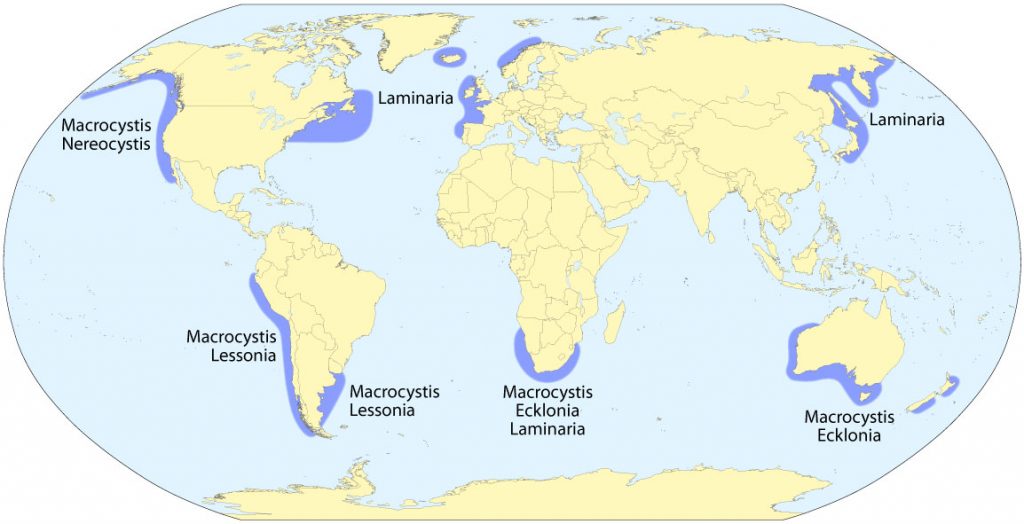
Kelp forest distribution map adapted from R. S. Steneck, M. H. Graham et al, ‘Kelp Forest Ecosystems: biodiversity, stability, resilience and future’ in Environmental Conservation 29 (4), pp. 436–459. ©Maximilian Dörrbecker CC BY-SA 2.0

Gazing upward in a giant kelp forest, California Channel Islands, where approximately one third of southern California’s kelp forests lie.
The obvious conclusion is that humans almost always follow the food. Science writer Heather Pringle sums up this scenario of human migration:
“Almost certainly these voyagers traveled in small, sturdy boats—perhaps a type of kayak—and possessed sufficient seafaring skill to avoid spills that would lead to hypothermia and death. With such experience, the mariners and their children could well have headed northward at least 16,000 years ago. Crossing the straits by boat and walking the beaches, they could have gradually explored the coasts of the Kuril Islands, the Kamchatka Peninsula, and the Bering Land Bridge until finally reaching the west coast of the Americas, a journey of several thousand miles. A trail of distinctively shaped points and a telltale pattern of genes support this hypothesis.”7
Erlandson concedes that the overall push to inhabit a pristine continent was not accomplished in months or years but may in fact have taken thousands of years:
“Between about 18,200 and 14,700 years ago, three extended warming episodes in the northwestern Pacific may have reduced seasonal sea ice cover significantly, increased human access to intertidal and nearshore habitats, and facilitated the migration of maritime peoples from northeast Asia to Beringia. By about 16,000 to 15,000 years ago, a migration route following the outer coast of northwestern North America appears to have been open and productive, providing an opportunity for maritime peoples to migrate down the Pacific Coast into more temperate climates.”8
This argonautic scenario ostensibly makes a lot more sense than the monolithic paradigm propounded by most mid-20th century archaeologists—that is, the juggernaut-hordes of Clovis hunters heroically defying the harsh elements as they massacred multiple species of megafauna to extinction on their inexorable drive southward. The latter is known as the Pleistocene “overkill theory” or “Blitzkrieg model.” Erlandson describes what these landlubbers would have faced:
“In contrast, terrestrial peoples migrating through the interior from Beringia to southern South America at the end of the Pleistocene would have encountered numerous physical barriers (massive glaciers, large rivers, mountain ranges and alpine passes, deserts, etc.) and a wide variety of terrestrial ecosystems: from Arctic tundra, to relatively sterile periglacial landscapes, boreal and rain forests, grasslands, deserts, and more.”9
The so-called ice-free corridor supposedly opened up as the Late Wisconsin Glaciation dissipated—between about 12,000 and 11,000 years ago. The latter date was the approximate period of the Bering land-bridge inundation, when global sea level rose as much as 425 feet. Relatively speaking, this was a temporally narrow window—or doorway—of opportunity into the New World.10
However, the Paleolithic immigrants were granted no easy access. Geologist Archie Stalker delineates the physical adversities of the forbidding landscape during the waning Ice Age:
“Conditions would have been formidable under the best of circumstances. Fauna and flora would have had to be sufficiently established to supply the food, clothing and firewood required for the inhospitable conditions then prevailing. Ice barriers might still have blocked sections of the route; there would have been large, frigid glacial lakes and tumultuous rivers to cross—these latter swollen by drainage from mountains, local rainfall and melting glaciers; there would have been chilling winds blowing from the glaciers to face, and extended periods of intense cold as man slowly worked his way… south through the narrow part of the corridor, not knowing where he was going or what he had to face. There would have been the difficulties of crossing bogs, deltas, spurs of ice, and barren landscapes left by the retreating glaciers.”11
Mainstream archaeologist David J. Meltzer of the conservative Southern Methodist University reinforces both the perils and the petty annoyances that the Beringians must have faced in their far trek southward:
“Yet, even after the Laurentide and Cordilleran glaciers retreated and the ice-free corridor began to open between them—which it did, zipperlike, from its northern and southern ends—the newly deglaciated terrain must have been an impenetrable mess. Low-lying areas would have been inundated by meltwater lakes and mud flats. The higher, drier terrain may have been traversable, but was likely inhospitable, at least while coldkatabaticwinds drained off nearby ice sheets. It was centuries or more—perhaps not until approximately 12,000 BP—that the land was fully restocked with plants and animals, and became a habitable passage for human colonizers.”12
In my opinion even this scenario seems overly optimistic. Why put up with all these conflicting contingencies and precarious predicaments when smooth sailing was an option? Oo-ee baby, a sea cruise would have been the way to go!
Other factors suggest entry via the coast rather than down the ice-free corridor into the heart of North America. Linguist Richard Rogers of the Origins Research Institute in Des Moines, Iowa, found that there were more aboriginal languages south of the formerly glaciated areas than north of them. He also noted that there was greater diversification of languages on the Pacific Coast than in the interior of the continent. This evidence, he said, indicates that the peoples living south of the continental ice sheet or along the coast inhabited these regions much longer than those living up north or in the heartland.13But what timeframe we are talking about here? In 1976 Dr. Ruth Gruhn and her husband Dr. Alan Bryan, both of the University of Alberta, were excavating a site called Taima-Taima in Venezuela when they found a plethora of Pleistocene mammals, including mastodons, extinct horses, and armadillo-like glyptodonts the size of Volkswagen Beetles. They also unearthed a leaf-shaped projectile point lodged in the pelvis of one mastodon. A broken-off twig from the proboscidean’s stomach was radiocarbon dated at 13,000 BP. If the ice-free corridor had just began to open up at this time, then these mammoth hunters must have sprinted southward to Venezuela in record time. Either that or these people had already been living there for a long, long time. Gruhn and Bryan speculate that these paleo-wayfarers were granted passage not 13,000 years ago but perhaps 30,000 years ago or more, at least ten millennia before the Last Glacial Maximum froze any appreciable human movement to a standstill. Journalist Tom Koppel describes the archaeological couple’s hypothesis:
“Gruhn proposed a ‘coastal entry model’ for the first peopling of the Americas. It had the migrants first coming into the hemisphere along the North Pacific coast near the Bering Strait in a slowly spreading and narrow carpet of coastal occupation. They would have followed the Pacific coast south as far as Panama, then some would have crossed the narrow isthmus and followed the shores of the Gulf of Mexico, both northward, eventually bringing them to the southern coast of the United States, and eastward along the northern coast of South America. Meanwhile, others would have carried on southward, following the Pacific coast of South America.”14
This scenario may help to explain the findings at Page-Ladson site, an underwater sinkhole in the Aucilla River on the Gulf Coast of northern Florida. Divers led by geoarchaeologists Jessi Halligan of Florida State University and Michael Waters of Texas A&M University retrieved stone tools and mastodon bones together with twigs and seeds radiocarbon dated at 14,550 years ago. Also recovered was a mastodon tusk with grooves that appear to be carved by humans.15 This is one of the latest of a whole slew of pre-Clovis early sites discovered in the past few decades.

Pre-Clovis sites of the Americas adapted from a graphic in L. Wade, “Most archaeologists think the first Americans arrived by boat. Now, they’re beginning to prove it.” Science, August 10th, 2017. ©Pratyeka CC BY-SA 4.0.
Whatever Floats Your Boat
In his popular 1946 book, The Lost Americans, University of New Mexico professor Frank C. Hibbens states: “It is foolish for us to contemplate that these first Americans had anything more seaworthy than a log that they might straddle from time to time to cross a river.”16A lot has changed since the mid-20th century. He also called the Bering Strait the “front door to America.” In contrast, Frank Waters, in his 1963 classic titled Book of the Hopi, states that the Hisatsinom (ancestral Hopi, formerly known as the Anasazi), including the Snake Clan, trekked northward to the “Back Door of this Fourth World,” or the Arctic Circle.17 This implies that the “ice-free corridor” was not the main route; Hopi legends say it was the trans-Pacific. As we approach the first quarter of the 21st century, we find increasing evidence of multiple entryways into the New World—many doors, many “windows of opportunity.”
Endnotes
1. Stephen C. Jett, “George F. Carter and Culture-Historical Geography,” Pre-Columbiana: A Journal of Long-Distance Contacts, Vol. 3, No. 1-3, December 2003/June & December 2004. (Independence, Missouri: Early Sites Research Society, 2005),pp. 61-68.
2. George F. Carter, Earlier Than You Think: A Personal View of Man In America (College Station: Texas A&M University, 1980), pp. 297-298.
3. Pre-Columbiana: A Journal of Long-Distance Contacts, Vol. 4, No., 3 & 4/Vol. 5, No. 1, 2008/2009/2010 (Independence, Missouri: Early Sites Research Society, 2013), pp. 135-136.
4. Bryan Sykes, The Seven Daughter of Eve: The Science That Reveals Our Genetic Ancestry (New York: W. W. Norton & Company, Inc., 2001), p. 282.
5. Patrick Huyghe, Columbus Was Last: From 200,000 B.C. to 1492, a Heretical History of Who Was First (New York MJF Books, 1992), pp. 15.
6. Ibid., pp. 15-16.
7. Heather Pringle, “Did Humans Colonize the World By Boat?” Discover, May 20, 2008.
8. Jon. M. Erlandson et al., “The Kelp Highway Hypothesis: Marine Ecology, the Coastal Migration Theory, and the Peopling of the Americas,” The Journal of Island and Coastal Archaeology, Vol. 2, No. 2, 2007, p. 170.
9. Ibid., p. 171. Recent update: Lizzie Wade, “Most archaeologists think the first Americans arrived by boat. Now, they’re beginning to prove it,” Science, August 10, 2017.
10. Lauren Milideo, “Fieldwork revises ice-free corridor hypothesis of human migration,” Earth—the Science Behind the Headlines, April 13, 2014.
11. Archie Stalker quoted in Tom Koppel, Lost World: Rewriting Prehistory—How New Science Is Tracing America’s Ice Age Mariners (New York: Atria Books, 2003), pp. 66-67.
12. David J. Meltzer, First Peoples In the New World: Colonizing Ice Age America (Berkeley: University of California Press, 2009), p. 37.
13. Huyghe, Columbus Was Last, op. cit., p. 17.
14. Koppel, Lost World, op. cit., pp. 147-148, p. 163.
15. Bruce Bower, “‘Slam-dunk’ find puts hunter-gatherers in Florida 14,500 years ago,” ScienceNews, May 13, 2016. Artefacts recently found at the Gault site near Austin, Texas, however, proved to be over two millennia older than those in Florida. Pre-Clovis projectile points and other stone tools along with human teeth fragments were dated via optically stimulated luminescence to as old as 16,700 BP. According to Dr. D. Clark Wernecke, head archaeologist at the site: “’In 1590, [Spanish missionary and naturalist] Jose de Acosta wrote that the people in the New World were primitive humans who must have walked here, and we have built on that premise ever since,’ he said. ‘But it was not possible to walk here until much later, with 3-mile-high glaciers in the way. If people got here 15,000 to 20,000 years ago, they had to have come along the coast in boats.’”
Blake de Pastino, “16,000-Year-Old Tools Discovered in Texas, Among the Oldest Found in the West,” Western Digs, July 18, 2016.
16. Frank C. Hibbens, The Lost Americans (New York: Thomas Y. Crowell Company, 1968, 1946), p. 116.
17. Frank Waters and Oswald White Bear Fredericks, Book of the Hopi (New York: Penguin Books, 1977, 1963), pp. 39-40.
As above, so below; something came before…





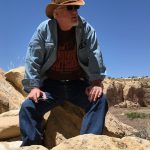
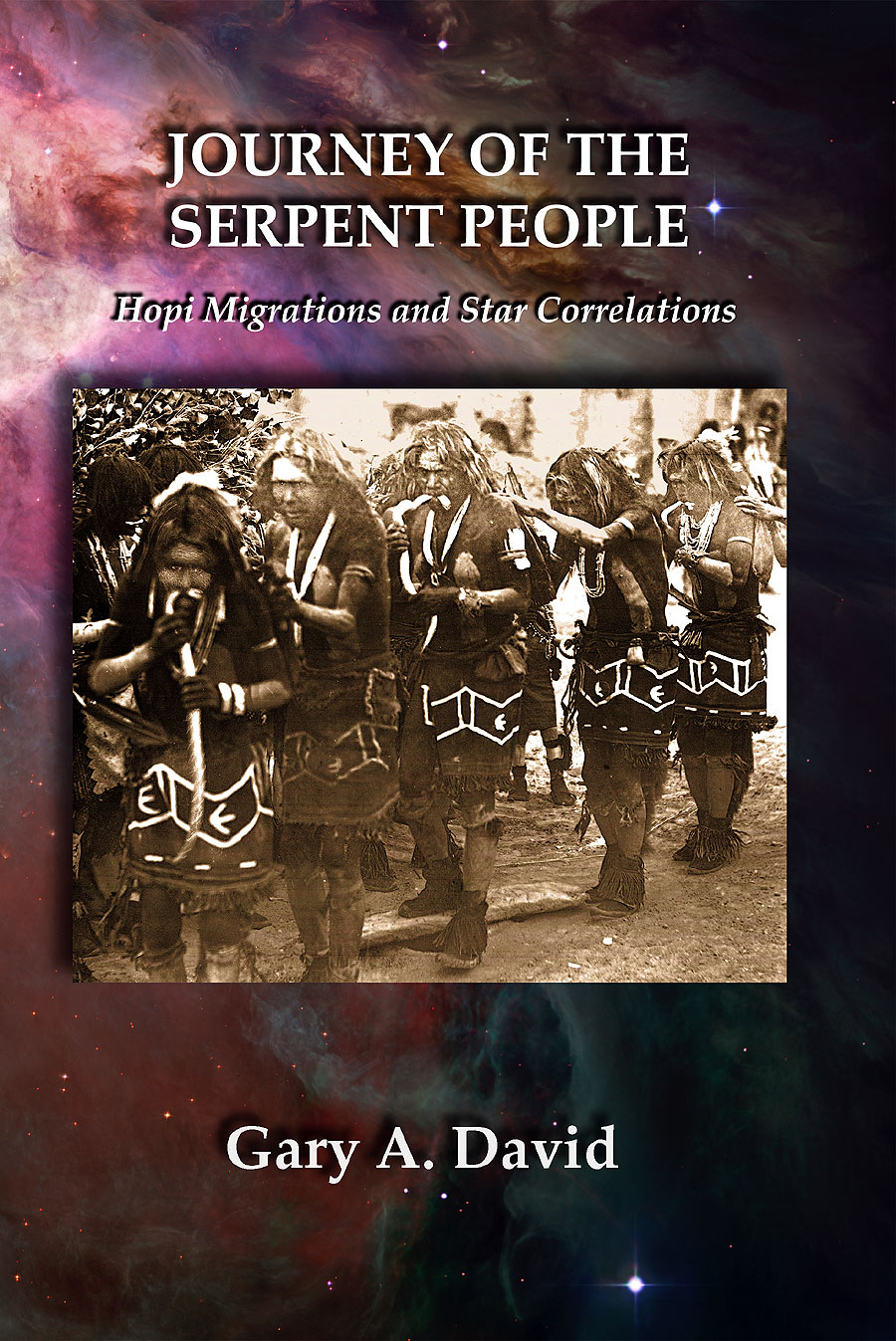






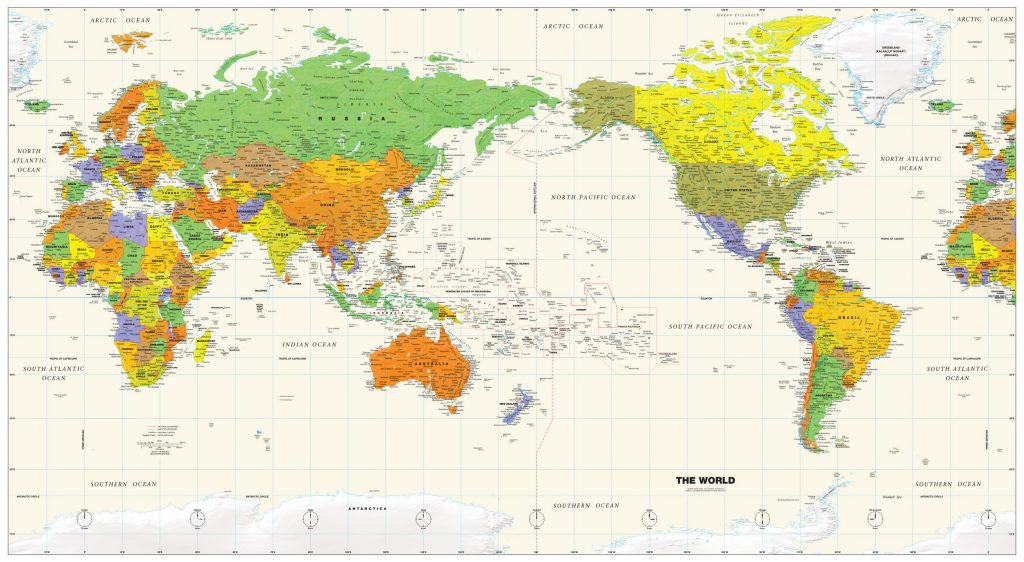
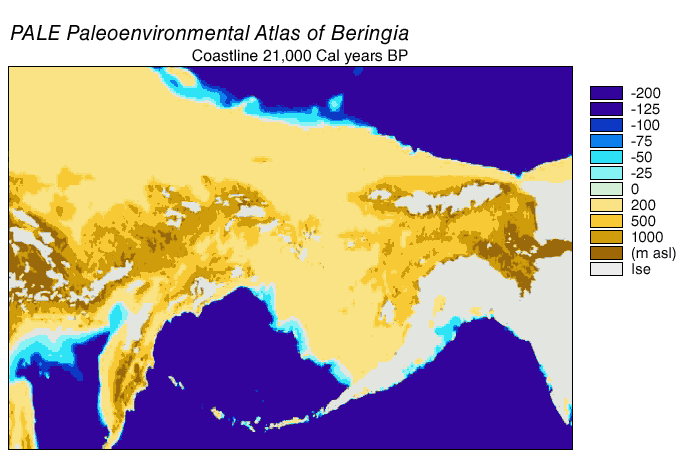
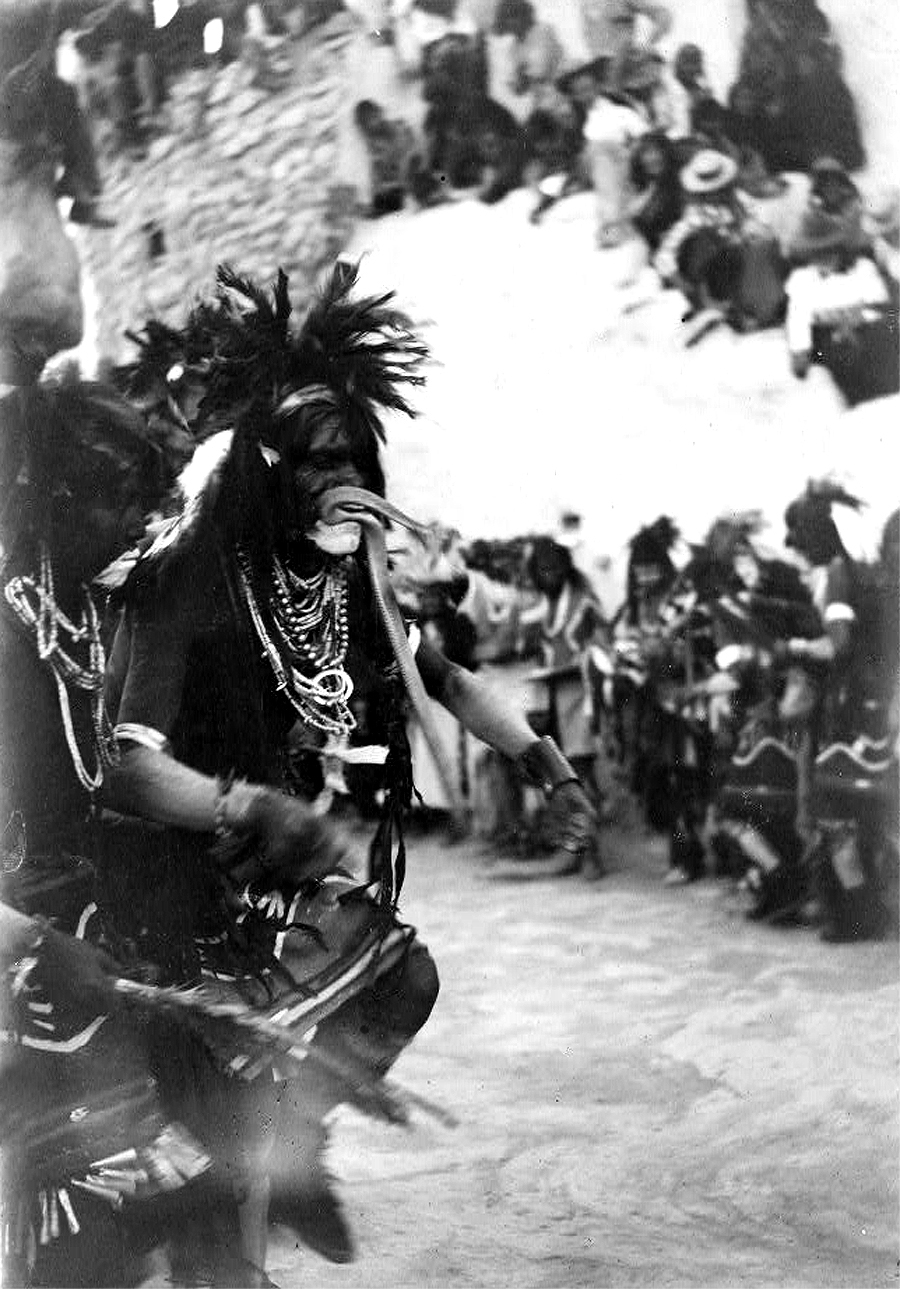


David, good rhetoric, but you adopt some of the silent assumptions of isolationism; that culture needs time to be ‘invented’ and ‘developed’; and that stylistic markers indicate transmission routes of the core content of culture. You may as well argue that technology (ensemble), intelligence and even perception depends on empire, or Head Office. As you argue that “cultures that do not interact ultimately stagnate… stunted growth in the backwaters of the world.”
There is a test case of a culture isolated in time and place by low population and weather, at Gobekli Tepe, about BC 8500. Their scouts brought flint from far and wide. Their cultural record is a full ensemble, including snakes. Their influence by conscious diffusion on the next known civilisation, Sumeria, next door but 4000 years later, is doubtful.
Compare Gobekli reliefs (particularly the two complex artworks on pillar D43 and pillar H56), with Harappan, Mohenjo Daro relief seals, some of them are on https://mindprintart.wordpress.com/2018/04/02/indian-harappan-seals-express-archetype-in-characters-and-script/
and you would need several stretches of supposed oral tradition and cultural missions to explain the overwhelming similarities.
There is a simpler explanation for culture; one DNA, one environment, one species, one consciousness. Same dreams, stories, calendar, ritual cycle, aspirations, technology, art, music, grammar. Some media allow thick layers of idiosyncrasy, of which every group makes full use to bond for the purpose of getting a corner on exploiting the environment, and rival groups, and one another. Those differences are artificial, but camouflage our overwhelming similarities.
You are practicing a kind of correspondence theory; these aprons or rituals or words or things look the same, therefore one set was the model for the other (which is often true), and therefore they were not re-invented (which is usually true); and therefore every society needs instruction, or it would devolve (which is false).